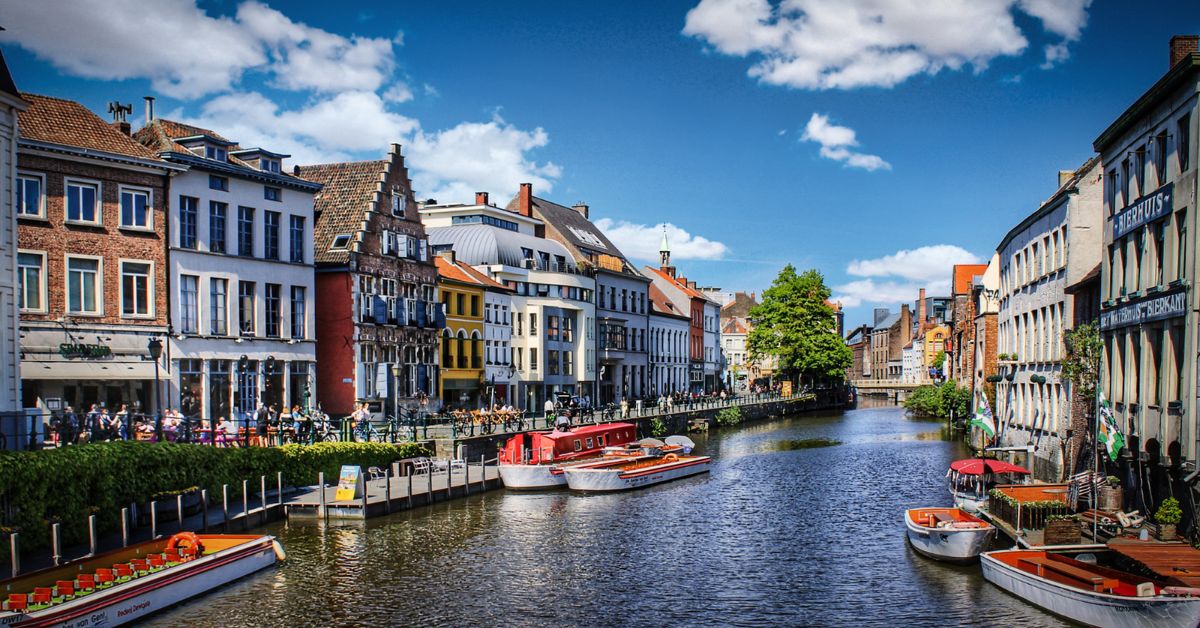When you think of European travel, cities like Paris, London, and Rome probably come to mind. These iconic destinations have long been on the radar of travelers worldwide, drawing millions each year with their well-documented history, stunning architecture, and cultural richness. But Europe is a vast and diverse continent, filled with hidden gems that often get overshadowed by these famous metropolises. If you’re a traveler who craves something beyond the beaten path, you’re in for a treat. This article is your guide to discovering 21 must-see cities in Europe that offer all the charm, culture, and beauty of their more famous counterparts—without the overwhelming crowds.
Imagine strolling through medieval streets where history is etched into every stone, or sipping coffee in a vibrant café where the only tourists are the locals. Picture yourself exploring cutting-edge architecture in a city that seamlessly blends the old with the new, or getting lost in a labyrinth of cobblestone alleys that open up to stunning views of mountains, rivers, or the sea. These are the kinds of experiences waiting for you in Europe’s less obvious cities. Whether you’re a history buff, a foodie, an art lover, or someone who simply enjoys the thrill of discovering something new, there’s a city on this list that will capture your heart and ignite your wanderlust.
In this journey through Europe’s hidden treasures, you’ll find a mix of cities from the snowy north to the sunny south, from the rolling hills of central Europe to the rugged coastlines of the east. Each city has its own unique story to tell, filled with local traditions, culinary delights, and off-the-beaten-path adventures that make them truly special. So pack your bags, grab your passport, and get ready to explore 21 of Europe’s most underrated cities—places where you can experience the authentic heart of the continent without the hustle and bustle of more tourist-heavy destinations. Welcome to the Europe you didn’t know you were missing.
Central and Eastern European Treasures
1. Brno, Czech Republic

When people think of the Czech Republic, Prague usually steals the spotlight with its stunning Gothic architecture and vibrant nightlife. However, Brno, the country’s second-largest city, is a hidden gem that deserves just as much attention. Located in the heart of the Moravian region, Brno is a city rich in history, culture, and a burgeoning food scene that rivals that of its more famous sibling.
Brno’s charm lies in its blend of old and new. The city’s skyline is dominated by the imposing Špilberk Castle, a medieval fortress that has witnessed centuries of history. A visit to the castle is a journey back in time, offering panoramic views of the city from its hilltop perch. Another must-see is the Villa Tugendhat, a UNESCO World Heritage site and a masterpiece of modernist architecture. Designed by Mies van der Rohe, this villa is a stunning example of early 20th-century design and offers insight into the lives of the wealthy Tugendhat family who commissioned it.
But Brno is not just about historical landmarks. The city is also home to a vibrant café culture, where you can sip on expertly brewed coffee while enjoying the laid-back atmosphere. Don’t miss out on exploring Brno’s underground labyrinths—a series of tunnels and cellars that lie beneath the city’s streets. These underground passages, which date back to the Middle Ages, are a fascinating glimpse into Brno’s past and offer an unusual way to experience the city.
2. Kraków, Poland
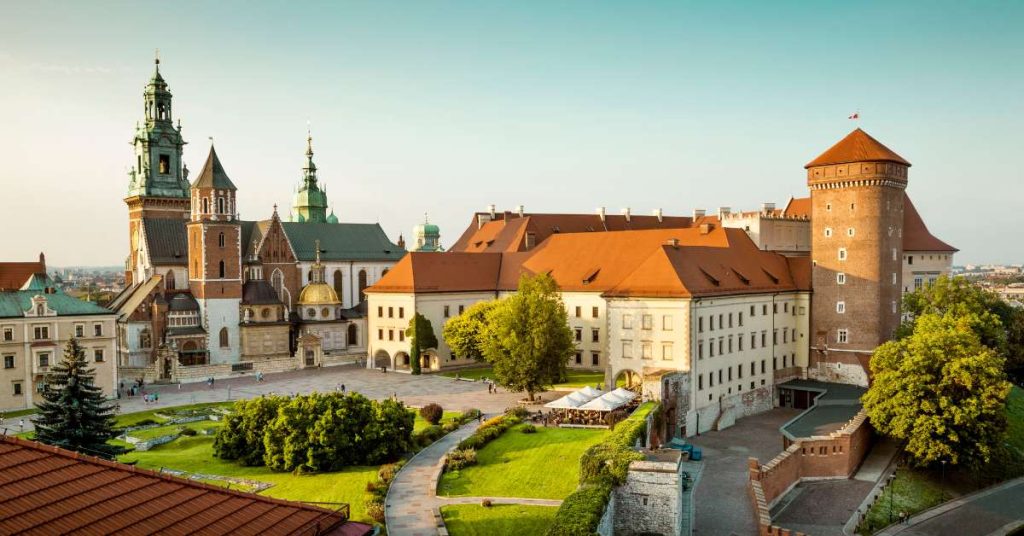
Kraków, often overshadowed by Warsaw, is a city that captivates with its medieval charm and rich history. Located in southern Poland, Kraków is one of the country’s oldest cities and served as its royal capital for centuries. Today, it is a vibrant cultural hub that attracts visitors with its stunning architecture, lively arts scene, and deep historical significance.
The heart of Kraków is its Old Town, a UNESCO World Heritage site that feels like a step back in time. The Main Market Square, one of the largest medieval squares in Europe, is the city’s centerpiece. Here, you’ll find the Cloth Hall, a historic market building that has been at the center of trade in Kraków for centuries. Towering over the square is St. Mary’s Basilica, with its iconic twin towers and stunning interior that features one of the largest Gothic altarpieces in the world.
A short walk from the square takes you to Wawel Castle, the former residence of Polish kings and one of the country’s most important cultural sites. The castle complex includes a beautiful cathedral where many Polish monarchs are buried. Nearby, the Kazimierz district offers a glimpse into Kraków’s Jewish heritage. Once the center of Jewish life in the city, Kazimierz is now a lively neighborhood filled with quirky cafes, art galleries, and historic synagogues.
Kraków is also a city that invites reflection. A visit to the nearby Auschwitz-Birkenau concentration camp is a somber reminder of the atrocities of World War II and a powerful experience that underscores the importance of remembering the past.
3. Ljubljana, Slovenia
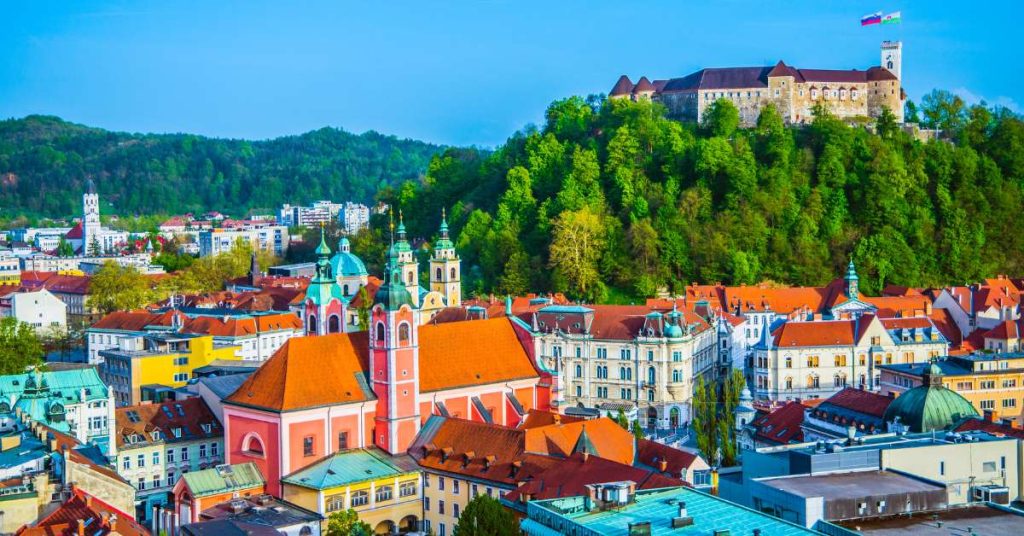
Ljubljana, Slovenia’s capital, is a city that effortlessly combines the charm of a small town with the sophistication of a European capital. Often overlooked in favor of more famous destinations like Venice or Vienna, Ljubljana is a true hidden gem with a unique character and a strong focus on sustainability.
The Ljubljanica River winds through the city, dividing it into two distinct halves, and is spanned by numerous picturesque bridges. The most famous of these is the Dragon Bridge, guarded by four dragon statues that have become symbols of the city. A stroll along the river’s embankments offers beautiful views of the city’s colorful buildings and lively cafes. Ljubljana Castle, perched on a hill above the city, is another must-visit attraction. From the castle’s tower, you can enjoy panoramic views of Ljubljana and the surrounding mountains.
Ljubljana is also known for its green spaces, with Tivoli Park being the largest and most popular. The park is perfect for a leisurely walk, a picnic, or simply relaxing in nature. The city’s commitment to sustainability is evident in its extensive network of bike paths and pedestrian zones, making it easy to explore on foot or by bike.
Culturally, Ljubljana punches well above its weight. The city is home to a thriving arts scene, with numerous galleries, theaters, and museums. The Metelkova district, a former military barracks turned alternative cultural center, is a hub for artists, musicians, and creative types. Here, you can experience Ljubljana’s vibrant nightlife, with live music, art installations, and a bohemian atmosphere that’s hard to find elsewhere.
4. Tallinn, Estonia
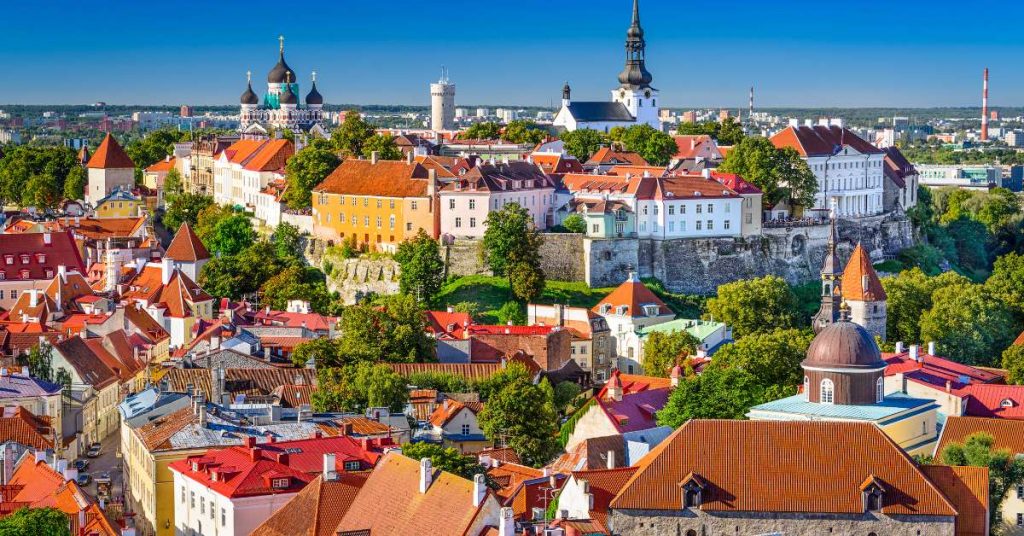
Tallinn, the capital of Estonia, is a city where medieval history and modern innovation coexist in perfect harmony. Located on the shores of the Baltic Sea, Tallinn is one of Europe’s best-preserved medieval cities, with a beautifully intact Old Town that is a UNESCO World Heritage site.
The heart of Tallinn is its Old Town, a maze of cobblestone streets, medieval buildings, and Gothic churches. The town’s centerpiece is the Town Hall Square, dominated by the spire of the Gothic-style Town Hall. The square is surrounded by colorful merchant houses and is a hub of activity, especially during the Christmas market season when it transforms into a winter wonderland. A visit to the Alexander Nevsky Cathedral, an ornate Russian Orthodox church, is also a must. The cathedral’s striking domes and intricate interior are a testament to Tallinn’s diverse cultural heritage.
Tallinn’s charm extends beyond its historical sites. The city is also a modern tech hub, often referred to as the “Silicon Valley of Europe.” Estonia’s e-residency program and digital-first approach have made Tallinn a magnet for startups and tech entrepreneurs. This blend of old and new is evident throughout the city, where medieval walls and towers stand alongside contemporary glass buildings.
For a taste of local life, head to the Telliskivi Creative City, a former industrial area turned creative hub. Here, you’ll find an eclectic mix of art studios, cafes, and boutiques, all housed in repurposed factory buildings. It’s the perfect place to experience Tallinn’s innovative spirit and vibrant cultural scene.
Southern European Gems
5. Porto, Portugal

While Lisbon often grabs the headlines, Porto is a city that should not be overlooked. Located in northern Portugal, Porto is a city of contrasts, where ancient architecture meets a thriving modern culture. The city’s historic center is a UNESCO World Heritage site, filled with narrow streets, colorful buildings, and breathtaking views of the Douro River.
One of the most iconic sights in Porto is the Dom Luís I Bridge, a double-deck iron bridge that spans the Douro River and connects the city with Vila Nova de Gaia. Walking across the bridge offers stunning views of Porto’s Ribeira district, with its terracotta roofs and riverside cafes. The Ribeira is one of the oldest neighborhoods in Porto, and its maze of narrow streets is perfect for exploring on foot. Don’t miss a visit to Livraria Lello, one of the most beautiful bookstores in the world, with its ornate wooden staircase and stained glass ceiling.
Porto is also famous for its wine. The city is the birthplace of port wine, a sweet fortified wine that is aged in the cellars of Vila Nova de Gaia, just across the river from Porto. A visit to one of these cellars is a must for any wine lover. You can take a guided tour to learn about the wine-making process and enjoy a tasting of different port varieties. For a truly unforgettable experience, take a river cruise along the Douro River, where you can see the terraced vineyards that produce the grapes for this world-famous wine.
6. Valencia, Spain
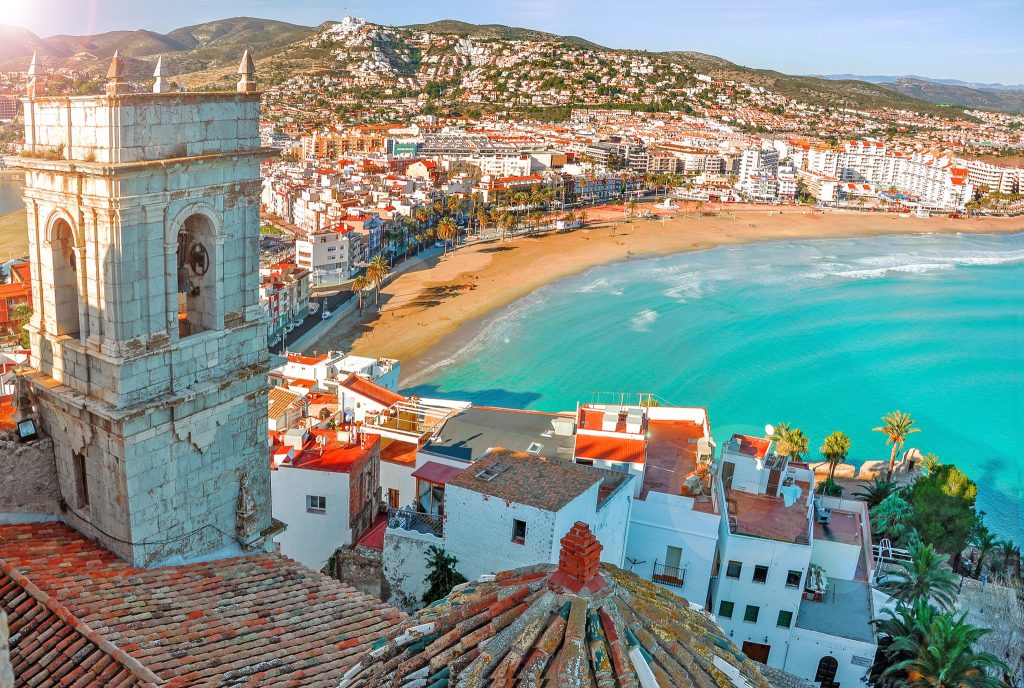
Valencia, Spain’s third-largest city, is often overshadowed by Madrid and Barcelona, but it’s a destination that deserves your attention. Located on the eastern coast of Spain, Valencia is a city of innovation, with futuristic architecture, a vibrant food scene, and a rich history that dates back over 2,000 years.
One of Valencia’s most famous landmarks is the City of Arts and Sciences, a sprawling complex of futuristic buildings designed by renowned architect Santiago Calatrava. The complex includes an opera house, a planetarium, an interactive science museum, and Europe’s largest oceanographic aquarium. The sleek, white structures set against a backdrop of azure pools and gardens create a striking contrast to the city’s historic center.
Valencia’s Old Town, known as El Carmen, is a maze of narrow streets, medieval buildings, and lively plazas. The city’s cathedral, which houses what is believed to be the Holy Grail, is a mix of Gothic, Romanesque, and Baroque architecture. Climb the Miguelete Tower for panoramic views of the city. Another must-see is the Central Market, one of the largest and oldest food markets in Europe. Here, you can sample local delicacies like jamón ibérico, fresh seafood, and the city’s signature dish, paella.
Valencia is also a city that knows how to celebrate. The annual Fallas festival is a five-day extravaganza of parades, fireworks, and the burning of giant paper-mâché sculptures. It’s a unique cultural experience that draws visitors from all over the world.
7. Palermo, Italy

Palermo, the capital of Sicily, is a city of contrasts, where ancient history, diverse cultures, and vibrant street life come together in a way that’s uniquely Sicilian. Often overlooked in favor of more famous Italian cities like Rome or Florence, Palermo is a hidden gem that offers a different perspective on Italy.
Palermo’s history is a tapestry of influences from the Greeks, Romans, Arabs, Normans, and Spanish, all of whom have left their mark on the city. This blend of cultures is most evident in Palermo’s architecture, where you’ll find Arab-Norman cathedrals, Baroque churches, and Byzantine mosaics. The Palermo Cathedral, with its mix of Gothic, Baroque, and Norman styles, is a must-visit. Another highlight is the Palatine Chapel, located within the Norman Palace. The chapel’s dazzling mosaics, inlaid with gold, are some of the finest in Italy.
Palermo is also famous for its street food, which reflects the city’s multicultural heritage. The bustling markets of Ballarò and Vucciria are the best places to sample local delicacies like arancini (fried rice balls), panelle (chickpea fritters), and sfincione (Sicilian pizza). These markets are also a feast for the senses, with vendors shouting out their wares, the aroma of grilled meats filling the air, and the vibrant colors of fresh produce on display.
For a more tranquil experience, head to the Mondello Beach, just a short drive from the city center. This beautiful sandy beach, with its crystal-clear waters, is a favorite spot for locals and visitors alike.
8. Thessaloniki, Greece

Thessaloniki, Greece’s second-largest city, is a vibrant and dynamic destination that is often overlooked in favor of Athens or the Greek islands. However, this coastal city has a rich history, a thriving arts scene, and a lively atmosphere that makes it one of Greece’s most exciting cities.
Thessaloniki’s history dates back to its founding in 315 BC, and its diverse past is reflected in its architecture. The city’s most famous landmark is the White Tower, a 15th-century fortress that has become a symbol of Thessaloniki. A visit to the tower offers panoramic views of the city and the Thermaic Gulf. The Rotunda, a massive cylindrical structure that was originally built as a mausoleum for the Roman emperor Galerius, is another must-see. Over the centuries, the Rotunda has served as a church, a mosque, and now a museum.
The city’s waterfront is a lively promenade that stretches for several kilometers, offering beautiful views of the sea and the distant Mount Olympus. It’s the perfect place for a leisurely walk, a bike ride, or simply relaxing in one of the many cafes. Thessaloniki is also known for its vibrant nightlife, with a wide range of bars, clubs, and live music venues to choose from.
Thessaloniki’s culinary scene is a reflection of its multicultural heritage, with influences from Greek, Turkish, and Balkan cuisines. Be sure to try local specialties like bougatsa (a pastry filled with sweet or savory ingredients), koulouri (a sesame-covered bread ring), and mezedes (small plates of appetizers).
Scandinavian Highlights
9. Bergen, Norway
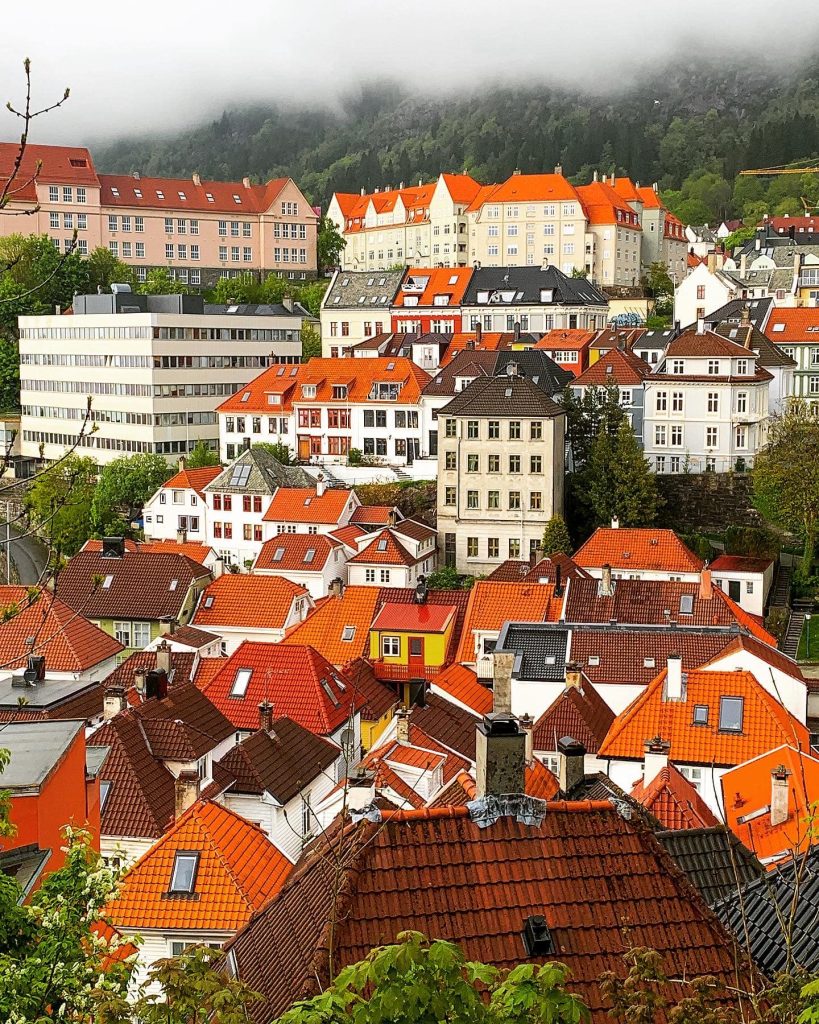
Bergen, Norway’s second-largest city, is often overshadowed by the capital, Oslo, but it’s a destination that offers a unique blend of natural beauty, rich history, and vibrant culture. Nestled between seven mountains and surrounded by fjords, Bergen is a gateway to some of the most stunning landscapes in Norway.
The city’s historic Bryggen wharf is a UNESCO World Heritage site and a reminder of Bergen’s past as a major center of trade in the Hanseatic League. The colorful wooden buildings that line the wharf are home to museums, galleries, and shops selling local crafts. A stroll through the narrow alleyways behind Bryggen takes you back in time, with well-preserved wooden houses and hidden courtyards that offer a glimpse into Bergen’s medieval past.
For panoramic views of the city and the surrounding fjords, take the Fløibanen funicular to the top of Mount Fløyen. From here, you can hike along scenic trails, enjoy a picnic with a view, or simply relax and take in the breathtaking scenery. Bergen is also a cultural hub, with a lively music scene, numerous festivals, and a rich tradition of theater and the arts. The Bergen International Festival, held every summer, is one of the largest cultural events in Scandinavia and attracts artists and performers from around the world.
Bergen’s location on the west coast of Norway means that it’s also a great base for exploring the surrounding fjords. A boat tour through the Nærøyfjord or the Sognefjord offers some of the most spectacular scenery in the world, with towering cliffs, cascading waterfalls, and crystal-clear waters.
10. Gothenburg, Sweden
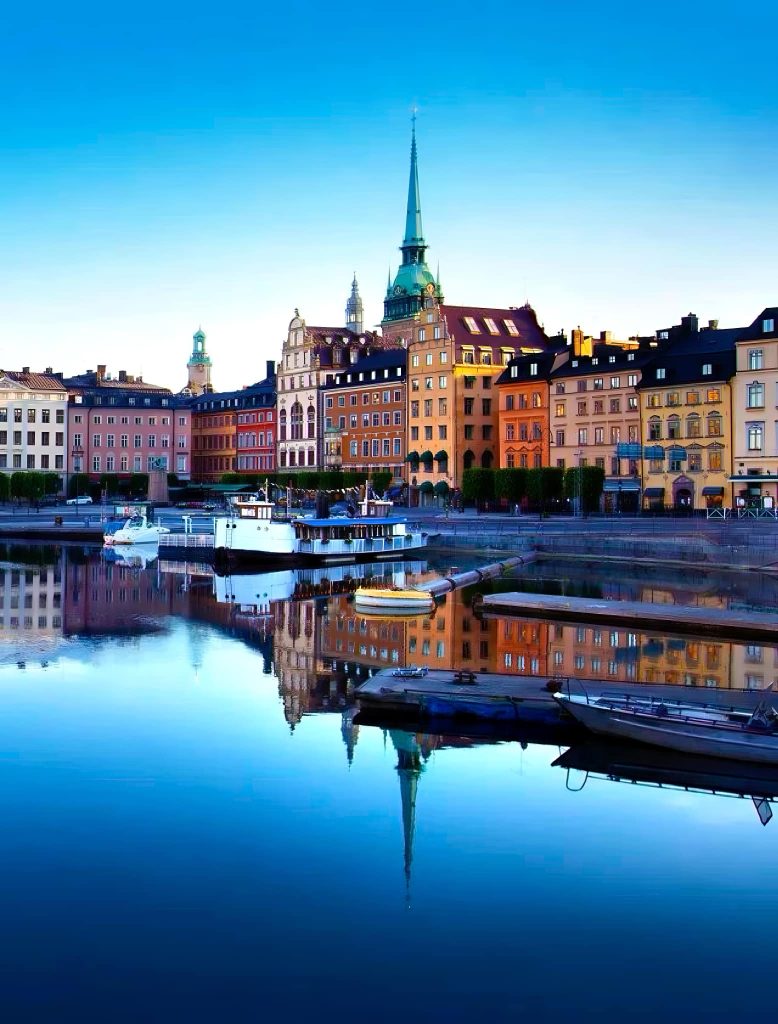
Gothenburg, Sweden’s second-largest city, is a charming and vibrant destination that is often overshadowed by Stockholm. Located on the country’s west coast, Gothenburg is known for its picturesque canals, green spaces, and a lively cultural scene that makes it a must-visit for any traveler to Sweden.
The city’s Dutch-inspired canals are a reminder of its history as a major trading hub in the 17th century. A boat tour through the canals is a great way to see the city from a different perspective and learn about its maritime heritage. The Haga district, one of Gothenburg’s oldest neighborhoods, is a delightful area to explore on foot, with its cobblestone streets, well-preserved wooden houses, and cozy cafes. Don’t miss the chance to try a traditional Swedish cinnamon bun, known as a kanelbulle, in one of Haga’s charming bakeries.
Gothenburg is also home to some of Sweden’s best museums, including the Gothenburg Museum of Art, which houses an impressive collection of Nordic and European art. The Universeum science center and the Liseberg amusement park are great options for families or anyone looking for a fun day out.
The city’s culinary scene is another highlight, with a strong emphasis on fresh, locally sourced ingredients. Gothenburg is known for its seafood, and the Feskekôrka (Fish Church) is the best place to sample the catch of the day. This indoor fish market, housed in a building that resembles a Gothic church, offers a wide range of seafood delicacies, from oysters and prawns to smoked salmon and herring.
11. Helsinki, Finland

Helsinki, the capital of Finland, is a city that perfectly blends modern design, rich history, and a deep connection to nature. Often overlooked in favor of its Scandinavian neighbors, Helsinki is a dynamic and innovative city that offers a unique experience for travelers.
One of Helsinki’s most iconic landmarks is the Temppeliaukio Church, also known as the Rock Church. This stunning structure is carved directly into solid rock, creating a serene and otherworldly space that is often used for concerts and events. Another architectural highlight is the Helsinki Cathedral, a neoclassical masterpiece that dominates the city’s skyline. The cathedral’s green dome and white facade are visible from many parts of the city, and its steps are a popular gathering place for locals and tourists alike.
Helsinki is also known for its cutting-edge design and innovation. The city’s Design District is a creative hub filled with galleries, boutiques, and studios showcasing the best of Finnish design. Here, you can find everything from fashion and furniture to art and accessories, all with the sleek, minimalist aesthetic that Finland is famous for.
Nature is never far away in Helsinki. The city is surrounded by water, and its many islands and archipelagos are easily accessible by ferry. The Suomenlinna sea fortress, a UNESCO World Heritage site, is one of the most popular day trips from Helsinki. This sprawling fortress, spread across several islands, offers a fascinating glimpse into Finland’s military history, as well as beautiful views of the Baltic Sea.
Helsinki’s food scene is another highlight, with a strong focus on seasonal and locally sourced ingredients. The city’s many markets, such as the Old Market Hall and the Hakaniemi Market, are great places to sample Finnish specialties like reindeer, salmon, and rye bread.
Western European Wonders
12. Ghent, Belgium

Ghent, often overshadowed by Brussels and Bruges, is one of Belgium’s best-kept secrets. This charming city offers a perfect blend of history, culture, and modernity, making it a must-visit destination in Western Europe.
One of Ghent’s most famous landmarks is the medieval Gravensteen Castle, also known as the Castle of the Counts. This imposing fortress, with its thick stone walls, towers, and moat, offers a fascinating glimpse into the city’s past. The castle’s museum showcases medieval weaponry, armor, and torture devices, while the ramparts provide panoramic views of the city.
The historic center of Ghent is a maze of narrow streets, picturesque canals, and beautifully preserved buildings. The city’s three iconic towers—St. Nicholas’ Church, the Belfry, and St. Bavo’s Cathedral—dominate the skyline and are a testament to Ghent’s rich architectural heritage. St. Bavo’s Cathedral is also home to one of the most famous artworks in the world, the Ghent Altarpiece, a stunning polyptych painted by the Van Eyck brothers in the 15th century.
Ghent is also a city of culture and creativity. The city’s many museums, galleries, and theaters offer a diverse range of artistic and cultural experiences. The Museum of Fine Arts and the SMAK (Museum of Contemporary Art) are both worth a visit, as is the Design Museum, which showcases the best of Belgian design.
For a taste of Ghent’s vibrant food scene, head to the Patershol district, a lively neighborhood known for its excellent restaurants, cafes, and bars. Here, you can sample traditional Belgian dishes like waterzooi (a creamy chicken or fish stew) and Gentse stoverij (beef stew cooked in beer). Don’t forget to try the local specialty, cuberdons, which are cone-shaped candies with a soft, jelly-like center.
13. Luxembourg City, Luxembourg

Luxembourg City, the capital of the small yet incredibly wealthy country of Luxembourg, is a hidden gem in Western Europe. Often overshadowed by its larger neighbors, Luxembourg City is a place where old-world charm meets modern sophistication.
The city’s most famous landmark is the Bock Casemates, a network of underground tunnels and fortifications that date back to the 17th century. These tunnels, which were originally built to protect the city from invaders, offer a fascinating glimpse into Luxembourg’s military history. Today, the Bock Casemates are a UNESCO World Heritage site and one of the city’s most popular attractions.
Luxembourg City is also known for its picturesque old town, which is perched on a cliff overlooking the Alzette and Pétrusse rivers. The city’s historic center is a maze of cobblestone streets, medieval buildings, and charming squares. The Grand Ducal Palace, the official residence of the Grand Duke of Luxembourg, is a stunning example of Renaissance architecture and is open to the public during the summer months.
For panoramic views of the city, head to the Chemin de la Corniche, often referred to as “the most beautiful balcony in Europe.” This scenic promenade offers breathtaking views of the old town, the river valleys, and the surrounding countryside.
Luxembourg City is also a hub of culture and the arts. The city’s many museums, including the National Museum of History and Art and the Mudam (Museum of Modern Art), offer a diverse range of exhibitions and collections. The Philharmonie Luxembourg, with its striking modern design, is one of Europe’s leading concert halls and hosts performances by world-renowned musicians and orchestras.
Luxembourg’s culinary scene is a reflection of its multicultural population, with a mix of French, German, and Luxembourgish influences. Be sure to try local specialties like judd mat gaardebounen (smoked pork with broad beans), kniddelen (Luxembourgish dumplings), and quetschentaart (plum tart).
Hidden Treasures of the Balkans
14. Kotor, Montenegro
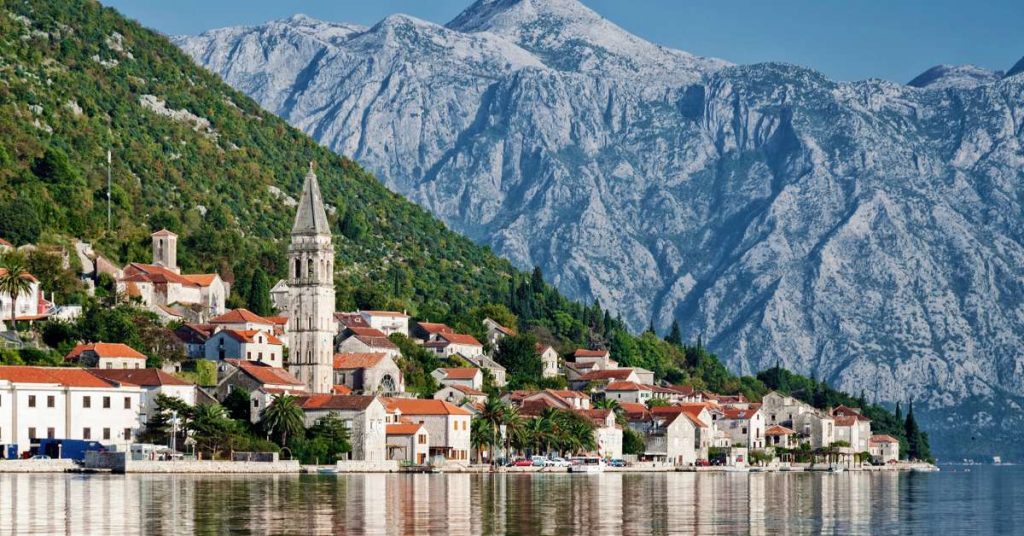
Kotor, a small town located on the coast of Montenegro, is one of the most picturesque destinations in the Balkans. Nestled between the rugged mountains and the sparkling waters of the Adriatic Sea, Kotor is a hidden gem that offers a perfect blend of natural beauty, history, and culture.
The town’s most famous landmark is the Kotor Old Town, a UNESCO World Heritage site that is one of the best-preserved medieval towns in the Mediterranean. The narrow streets, stone buildings, and charming squares are a delight to explore, and the town’s walls offer stunning views of the surrounding landscape.
The Kotor Cathedral, also known as St. Tryphon’s Cathedral, is one of the most important religious sites in Montenegro and a stunning example of Romanesque architecture. The cathedral’s interior is adorned with beautiful frescoes and intricate stone carvings, while the museum offers a fascinating insight into the town’s history.
For panoramic views of Kotor and the surrounding area, hike up the steep path to the Castle of San Giovanni, a fortress that sits high above the town. The hike is challenging, but the views from the top are well worth the effort.
Kotor is also known for its lively cultural scene, with numerous festivals and events held throughout the year. The Kotor Carnival, held every February, is one of the town’s biggest events, while the KotorArt Festival, held every summer, showcases the best of Montenegrin art, music, and theater.
The town’s food scene is a reflection of its coastal location, with a focus on fresh seafood and Mediterranean flavors. Be sure to try local specialties like grilled fish, black risotto, and priganice (fried dough balls served with honey or cheese).
15. Ohrid, North Macedonia

Ohrid, a small town located on the shores of Lake Ohrid in North Macedonia, is one of the most beautiful and historic destinations in the Balkans. Often referred to as the “Jerusalem of the Balkans,” Ohrid is home to a wealth of cultural and religious heritage, as well as stunning natural beauty.
The town’s most famous landmark is the Ohrid Fortress, a medieval fortress that sits atop a hill overlooking the town and the lake. The fortress, which dates back to the 4th century BC, offers panoramic views of the surrounding area and is a popular spot for watching the sunset.
The town’s historic center is a maze of narrow streets, stone houses, and ancient churches. The Church of St. John at Kaneo, perched on a cliff overlooking the lake, is one of Ohrid’s most iconic sights and a popular spot for photographers. The nearby Church of St. Sophia is another important religious site, with beautiful frescoes and a stunning interior.
Ohrid is also known for its vibrant cultural scene, with numerous festivals and events held throughout the year. The Ohrid Summer Festival, held every July and August, is one of the town’s biggest events, featuring performances by world-renowned artists in music, theater, and dance.
For a taste of Ohrid’s culinary scene, head to one of the many lakeside restaurants, where you can enjoy fresh fish from the lake, as well as traditional Macedonian dishes like tavče gravče (baked beans) and ajvar (a roasted red pepper spread).
16. Sarajevo, Bosnia and Herzegovina

Sarajevo, the capital of Bosnia and Herzegovina, is a city with a rich and complex history. Often described as the “Jerusalem of Europe,” Sarajevo is a place where East meets West, with a unique blend of cultures, religions, and traditions.
One of Sarajevo’s most famous landmarks is the Baščaršija, the city’s historic bazaar and cultural center. The narrow streets are lined with shops selling traditional crafts, souvenirs, and delicious food, while the nearby Gazi Husrev-beg Mosque is one of the most important religious sites in the city.
Sarajevo is also known for its many bridges, including the Latin Bridge, which is infamous for being the site of the assassination of Archduke Franz Ferdinand in 1914, an event that sparked World War I. The nearby Sarajevo Tunnel Museum offers a fascinating insight into the city’s more recent history, with exhibits on the Bosnian War and the Siege of Sarajevo.
The city’s vibrant cultural scene is another highlight, with numerous theaters, galleries, and music venues offering a wide range of artistic experiences. The Sarajevo Film Festival, held every August, is one of the biggest events in the city’s calendar and attracts filmmakers and film lovers from around the world.
Sarajevo’s food scene is a reflection of its diverse cultural heritage, with a mix of Ottoman, Austro-Hungarian, and Balkan influences. Be sure to try local specialties like ćevapi (grilled minced meat), burek (a savory pastry filled with meat or cheese), and baklava (a sweet pastry made with layers of filo dough, nuts, and honey).
In Conclusion
These hidden gems in Europe offer unique experiences and are perfect for travelers looking to explore off-the-beaten-path destinations. From the historic cities of Eastern Europe to the charming towns of the Balkans and the natural beauty of Northern Europe, these destinations are sure to leave a lasting impression.

